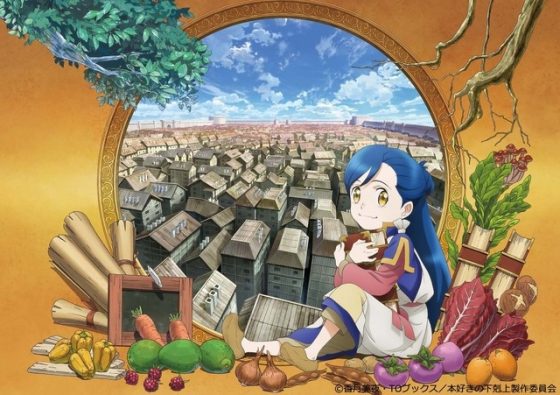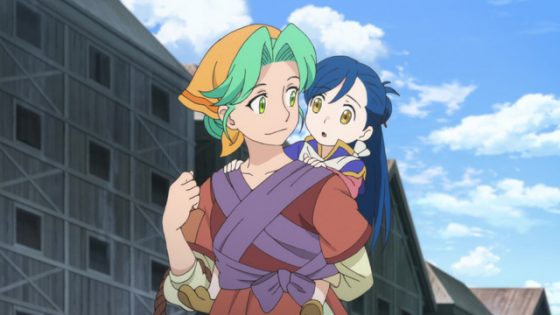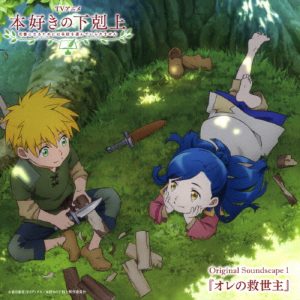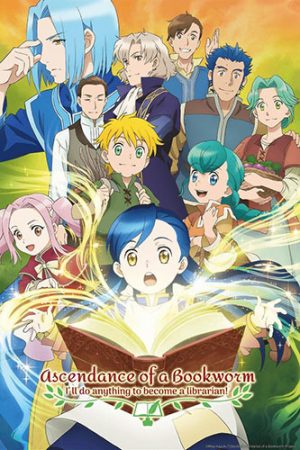
With the prior article established, we can now analyze Mototsu Urano’s rebirth as Myne. Myne is a sickly girl, often afflicted by sudden fevers. Her health leaves her constantly bedridden and therefore inexperienced. When Mototsu is reborn as Myne, the only knowledge she gains is that of her friends and family. Just as a child her age might be, she is unaware of the world.
However, the world is not the only thing Myne is blind towards. By emphasizing Myne’s hunger for knowledge, Ascendance of a Bookworm alludes to isekai’s greatest blessing and properly critiques it.
For the following two articles, I will discuss how Bookworm uses conventions to mold a lesson, not through books, but through a personal journey. In doing so, I hope to reveal how Ascendance of a Bookworm creates its message.
In the Pursuit of Knowledge: Balancing Isekai’s Greatest Blessing
Ascendance of a Bookworm does plenty well with its first episode. With a short but effective opening, the show smoothly explains its premise. As priest Ferdinand examines Myne’s memory, viewers see into her past.
During this segment, Myne speaks through narration. As she does so, her visage is likened to a picture book. As she cites her love of literature, she moves with her head deep within a book--until an unfortunate accident. Books tumble from a shelf, crushing her from below. She dies by the very thing she loves.
As her life fades, she prays, “O God, may I be able to read all kinds of books in my next life, too.” Her wish is granted, but not in the most ideal way. Typically in reincarnation isekai, knowledge is the greatest blessing for a protagonist. This can be (but is not limited to): knowledge of who they were, knowledge of technology/science, or knowledge of events that will transpire in the new world.
Mototsu (henceforth called Myne) is gifted with two: knowledge of her previous self and knowledge about her passion--books. However, while she does have isekai’s greatest strength, Ascendance of a Bookworm is not a story without obstacles.
Myne’s knowledge is kept in check by her inability to pursue it. Her frail body prevents her deepest wish: to read more books. From a writing standpoint, this creates a natural tension and an obvious character arc.
By denying what the character desires, the author can show what they might need. By showing that a character’s desire is not necessarily what they need, an author can create character development. By having a character develop, they naturally learn.
Thus, the problem the author faces is how to teach someone who’s spent their life pursuing knowledge. What lesson is there to teach such a bookworm?
Setting Up the Message
To send a message, Ascendance of a Bookworm focuses on its characters. While Myne fervently pursued her desires in the past, she can no longer in this world. Despite her limitations, her stubbornness wins out, and she jeopardizes her health in pursuit of her own happiness.
Pursuing her wishes is not without consequence. Myne’s health is influenced by a disease called “the devouring,” an overabundance of mana that eats away at one’s body. Mana, while typically found within nobles, has a rare chance to be found in commoners--and unfortunately for Myne, her appetite for knowledge is held back by this sickness.
Furthermore, a class system exists within this world. Since mana is commonly possessed by nobles, only the rich have access to magical items, some of which may help Myne recover. Both her social and physical conditions prevent her from living out her new life in old ways.
Thus, if Myne was a character who walked through life with her face buried in books, then to avoid the same fate in this world, she must learn quickly. However, without books, she will find that her teacher won’t be literature.
It will be the people around her.
Myne the Outsider: A Question of Belonging
As stated previously, the original Myne was both young and sickly. Without help, she couldn’t even leave her house. To further cause issues, the current Myne disregards her own health, often worrying those around her.
Just as Mototsu died in her world, it’s implied that the original Myne died by sickness. This makes the current Myne an imposter, an actor in the original’s body. This creates a dynamic where to survive, Myne must rely on strangers.
By necessity, the story forces Myne down a road she’s barely walked, and it’s on this path the story tells its message. To begin, Myne has a tendency to ignore those around her. Roughly 3 minutes into episode 2, Turi (Myne’s sister) comes home with meryl fruit. Upon hearing her mother, Myne learns oil can be extracted from it.
Myne is hit with inspiration and proclaims her excitement with an inner monologue. With accompanying visuals and Myne’s explanation, viewers learn how to make shampoo. Excited by this prospect, Myne asks Turi for some meryl fruit. Turi’s face brightens up, a chance to bond with her sister has arrived. As she turns her back, she says, “Listen up. You have to wrap it in cloth so it doesn’t splatter…”
Upon finishing her line, she turns around only to see Myne raise and slam down a mallet. The result doesn’t need mentioning. Turi looks in dismay as her sister repeats aloud the lesson she could have learned with patience.
In episode 8, she picks up a Tromba, unaware of what it does. A Tromba is a dangerous plant that sprouts and absorbs the nutrients from the land around it. Luckily, before it becomes unmanageable, her friends destroy it. Upon looking at its remains, Myne realizes it can be turned into paper--she can make books out of the very thing that almost killed her.
There’s a common thread here. Without the help of others, Myne would never have made the things she did. While this is a minor observation, in the grand scheme of isekai, this is a significant step forward. Commonly in isekai stories, the reason characters are transported/reborn is to fix something.
Kingdoms will summon heroes to fight demons. Gods and goddesses will summon the protagonist to guide and improve their world. Even in revenge-based isekai, the protagonist sees an injustice and seeks to right a wrong.
These types of stories place the protagonist in a position of power--that they know more than the denizens of a new world. If handled incorrectly, this can seem belittling. After all, if an entire world cannot solve its own problems, then it invites scrutiny. Perhaps the world is simply incapable or at worst, incompetent.
However, in Ascendance of a Bookworm, the problem isn’t the outside world. It’s internal, literally devouring Myne from within. Myne is a child, and much like her predecessors, they are also young. Bookworm is critiquing Myne’s character, questioning if she realizes her flaws.
To make this evident, Bookworm has reduced her blessings, effectively countering her own wish. Thus, if the conventional (isekai) blessings are denied, the story must emphasize what’s remaining.
And what’s left over, Myne finds, is these strangers she starts to call family.

Final Thoughts
Ascendance of a Bookworm is a simple but effective story, formed through its themes and execution. Even amongst a plethora of isekai anime, Bookworm has managed a fresh take on its subgenre. For the next article, I’ll go further into Myne’s personal journey and how the show reinforces its true blessing.
Recommended Post





